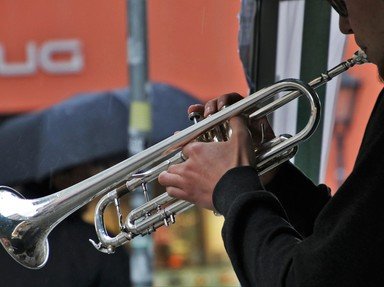Quiz Answer Key and Fun Facts
1. The late 1940s and early 1950s sparked a new sound in jazz known as bebop, which incorporated faster, more harmonic-based improvisation rather than melodic variation. Which of the following pianists is arguably the greatest influence on the bebop language?
2. Using space and silence in improvisation is a mature approach, and "saying a lot with little notes" can be very effective. Which of the following pianists is best known for his use of space and silence?
3. Though he possessed somewhat limited technique, Oscar Peterson remains one of the most influential pianists in the history of jazz.
4. Throughout Miles Davis' career, the piano chair in his various ensembles housed some of the idiom's most influential pianists/keyboardists. Which of the following musicians was not the pianist of a Miles Davis-led ensemble? BE CAREFUL!
5. Which of the following pianists was known best for just his playing, rather than playing AND composing?
6. Which of the following pianists can be linked most to the classical harmonic concepts of impressionism, much like the composers Debussy and Ravel?
7. Quartal voicings (chords built entirely of fourths) is a common sound to the jazz piano language. Which of the following pianists is known for revolutionizing this harmonic concept?
8. Which of the following pianists is best known for his work as a composer/collaborator with guitarist Pat Metheny in the Pat Metheny Group?
9. Many of the great jazz pianists were also equally great classical pianists. Which of the following duos went on a tour in Japan during the 1980s playing the Mozart Concerto for Two Pianos?
10. Which of the following orchestral conductors also gained renown as a world-class jazz pianist?
11. Which of the following pianists lost his cabaret card for allegedly refusing to testify against his friend in a drug bust?
12. Which of the following pianists is most associated with the ECM label?
13. Which of the following pianists went through a several-month phase where he was unable to record or perform because of coping with a death?
14. During the rise of the bebop era, Bud Powell was the house pianist at Minton's Playhouse.
15. Which of the following 20th century film composers began his career as a jazz pianist?
Source: Author
YouAreJunk
This quiz was reviewed by FunTrivia editor
Pagiedamon before going online.
Any errors found in FunTrivia content are routinely corrected through our feedback system.


